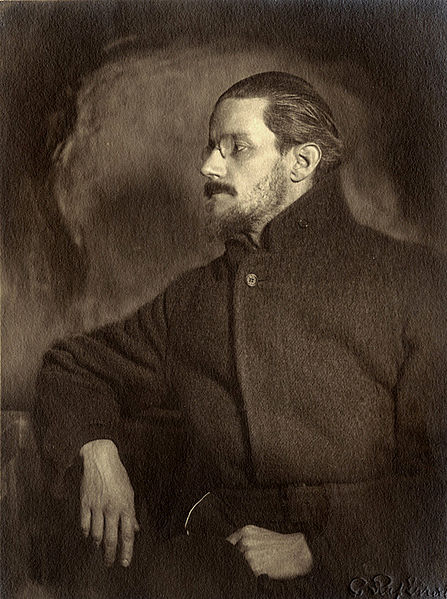
James Joyce
Born on February 2nd 1882 in Dublin, Ireland, James Joyce is one of the most celebrated writers of the 20th century. His ground-breaking style is known both for its complexity and for its unflinching nature.
James Augustine Aloysius Joyce was the eldest of ten children. His father, John Stanislaus Joyce, was a singer, but liked a drink, which meant that there was never much money for the family. As a result, from an early age Joyce was forced to look after himself.
Blessed with high intelligence, Joyce studied modern languages at University College Dublin, and soon after graduation he left Dublin for Paris, to study medicine. His dream to work in medicine ended shortly after his arrival in France when his mother became ill, and he returned to Ireland to care for her until she died in 1903.
While caring for his mother, he met Nora Barnacle, a hotel chambermaid who later became his wife. It was around this time that Joyce had his first short story published in the Irish Homestead magazine, shortly followed by two more of his tales.
In late 1904 he and Nora moved to what is now the Croatian city of Pula, before settling in Trieste, Italy. There, Joyce taught English and learned Italian, one of 17 languages he could speak. Determined to keep his two children, Georgio and Lucia, from suffering the same poverties he had as a child, Joyce continued to find work as a teacher as well as write.
In 1914 he published his first book, Dubliners, a collection of 15 short stories, and two years later he published his first novel, Portrait of the Artist as a Young Man. These stories caught the attention of the American poet, Ezra Pound, who praised Joyce for his unconventional style and voice. But it was his novel Ulysses, published in 1922, which pioneered Joyce’s use of stream of consciousnesses as a literary technique and set the course for a whole new kind of novel.
Ulysses is not an easy read, and even before it came out, debate raged over the content of the novel. The book was banned for several years after it was published in France, the UK and the US. In the US, Ulysses’s supposedly obscene content prompted the Post Office to confiscate issues of magazines that had published Joyce’s work. It took a court case in 1934 to declare that the novel was actually not obscene at all for American readers to be legally allowed to own a copy of Ulysses. The UK market was only allowed to stock the book in 1936.
By the time Ulysses had made Joyce a literary success, he and his family were living in Paris. It was at this time that he began to have problems with his eyes. Despite having a great deal of surgery, for many years Joyce was nearly blind, and was forced to write his work in red crayon on sheets of large paper so that he could see what he was doing. Consequently, it wasn’t until 1939 that Joyce published Finnegan’s Wake, his long awaited next novel.
The Nazi invasion of Paris in the Second World War saw Joyce and his family flee to Zurich. However, Joyce became ill before the end of the war, dying following an intestinal operation, at the age of 59 on January 13th 1941. He is buried in Fluntern cemetery in Zurich.
Joyce’s exploration of language and new literary forms displayed a fresh approach for many novelists, one that drew heavily on his love of the examination of big events through small happenings in everyday lives. It is a technique which is still emulated by writers today.
